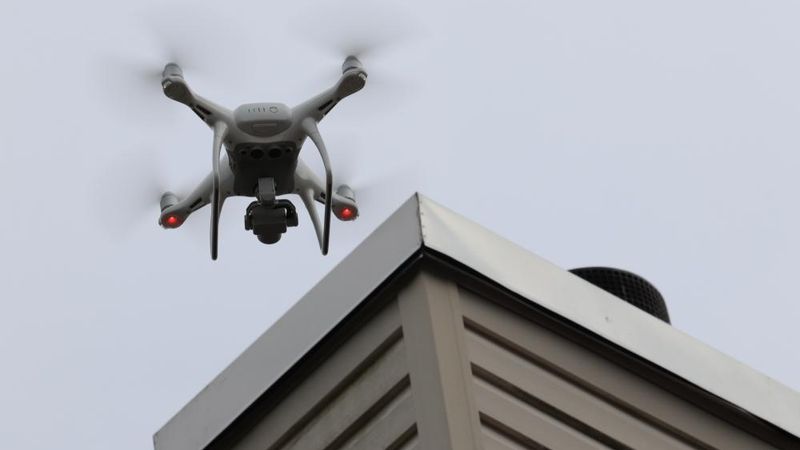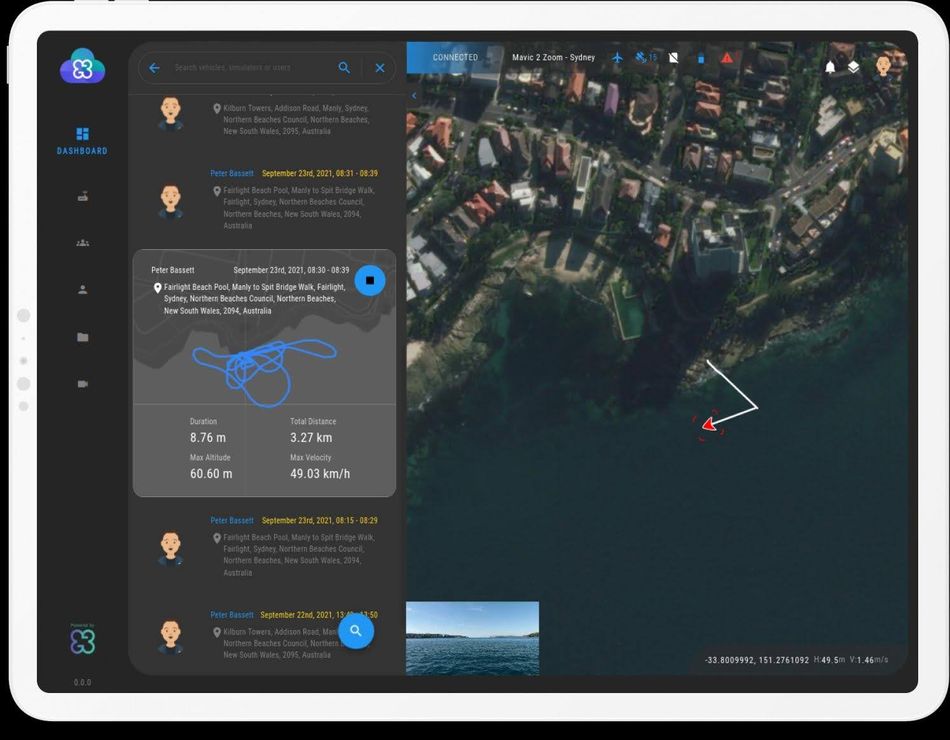Streamlining Drone Fleet Operations with Advanced Management Systems
Drones, coupled with cutting-edge navigation systems, are promising unmatched efficiency and foresight across diverse sectors.
In today's rapidly evolving technological landscape, businesses are constantly seeking innovative solutions to optimise their operations, enhance productivity, and maintain a competitive edge. One such transformative technology is drones. Integrating a drone programme into an organisation's core operations can significantly address specific business needs and objectives, offering a plethora of advantages.
Further, augmenting the use of drones with sophisticated drone management software that enables seamless creation and management of drone fleets further enhances the broad advantages of a corporate drone program.
Operational Efficiency Through Drone Fleets
The advent of drone technology has ushered in a new era that has significantly impacted operational efficiency across various industries. These advanced devices have fundamentally changed how we approach tasks that were traditionally labour-intensive, time-consuming, and often less accurate.
Drones have the remarkable ability to cover large areas in a short amount of time. This speed is invaluable for a wide range of monitoring and inspection tasks, making drones an ideal solution for sectors that require quick and comprehensive oversight. The speed at which drones operate not only saves time but also allows for more frequent inspections, leading to more timely interventions and better maintenance outcomes.
This speed and area of coverage is expanded by combining drones into fleets. Software such as Cloud Ground Control enables drones to form autonomous fleets operated seamlessly from a web browser.
Early problem detection informing data-driven decisions
Drones can come equipped with high-resolution cameras and cutting-edge sensors that capture imagery in extraordinary detail. This level of precision is crucial for early problem detection, allowing organisations to pre-empt potential crises before they escalate. The detailed data collected by drones can be analysed to make informed decisions, thereby improving the quality of operations and reducing the likelihood of costly errors.
They can also operate in environments that are either hard to reach or hazardous, effectively reducing the risks traditionally associated with manual labour in such areas. By taking over tasks that would otherwise require significant human resources and time, drones offer a safer and more efficient alternative.
The automation capabilities of drone fleets eliminate the need for extensive human intervention, making them a cost-efficient solution. By automating observation and detection tasks that were once manual, drones not only reduce labour costs but also increase the speed and accuracy of those operations.
From agriculture to manufacturing facilities: Drone fleets have broad application
With so many advantages, drones can be applied to a broad range of industries. Consider the energy sector, for example, the maintenance and monitoring of vast solar farms. Traditionally, inspecting these expansive arrays for defects or inefficiencies was a time-consuming task, often requiring manual labour and ground-based equipment. However, with the advent of drones equipped with thermal imaging cameras, operators can now swiftly identify malfunctioning solar panels or areas with suboptimal performance. These drones can detect temperature variations, indicating potential issues like debris accumulation, panel misalignment, or electrical faults.
The advantages of industrial drone systems also extend to the agriculture industry, where multispectral vision capabilities are revolutionising crop management. Instead of relying on ground-level observations or satellite imagery, which might not provide the most current or detailed view, farmers can deploy drones to obtain a more immediate and comprehensive understanding of their fields. These drones can identify areas of stress, pest infestations, or water deficiencies long before they become visible to the naked eye. With this information at hand, farmers can apply targeted treatments, optimise irrigation, and make informed decisions about harvesting, leading to improved crop yields and resource management.

In essence, the visionary capabilities of drones are not just enhancing operational efficiency; they are fundamentally reshaping how industries approach problem-solving, monitoring, and optimisation. As drone technology continues to advance, and as its integration becomes more widespread, it's evident that the potential applications of drone vision are vast and transformative.
The Crucial Role of Drone Management
While individual drones can be equipped with computers to run complex navigation software, drone swarms, and other specialised drone activities such as monitoring and inspection require a drone management platform to ensure they are operating at their peak.
A Drone Management Platform is a comprehensive software solution designed to streamline the operation, coordination, and data management of drone fleets. It serves as a centralised hub that allows operators, administrators, and other stakeholders to effectively manage various aspects of drone operations.
One platform example is Cloud Ground Control. This drone management platform can enable commercial drone operators’ connection, monitoring, and control of any drone or drone swarm directly from a web browser. Designed for multi-user and multi-drone operations, the platform leverages 4G/5G connectivity through a credit card-sized modem or a smartphone app.
This feature is invaluable for enterprises looking to improve efficiency through a drone programme as it enables very quick onboarding. CGC offers an array of features such as real-time video feeds, telemetry, end-to-end encryption, built-in compliance, and cloud storage which enable enterprises to use drones for applications such as monitoring and maintenance as described above.
CGC enables users to View and control an uncrewed drone fleet
from a web browser. Source: CGC
Embracing the Future with Drones
In an age of rapid technological progression, the potential of drones extends far beyond simplistic aerial photography or recreational pursuits. The transformative nature of this technology, evidenced through its revolutionary impact on a wide spectrum of industries, underscores its pivotal role in redefining operational paradigms. As maintenance and monitoring tasks are streamlined by drones, businesses are poised to enjoy enhanced safety, boosted efficiency, and notable cost savings.
The utilisation of drone technology, especially when complemented by advanced systems like those provided by Advanced Navigation, promises a future where operations are not only more efficient but also more resilient and proactive. Their precision in navigation and advanced imaging capabilities ensures industries are not just addressing problems but anticipating them.


